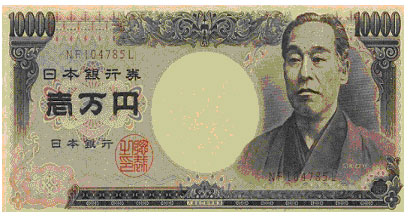|
|||
Unwinding the Yen, Unravels Global Stock MarketsBy Gary Dorsch Millions of words have been written about the heavy handed tactics of Japan's Ministry of Finance (MoF) in manipulating the value of the Japanese yen, the Japanese bond market, and squeezing short sellers in the Nikkei-225 futures market. Manipulation of markets through the use of jawboning, re-jigging of inflation statistics, and outright intervention is a time honored tradition at the MoF. Japan's Ministry of Finance is a political, economic, and intellectual force without parallel, and with a greater concentration of power than any branch of government amongst the major industrialized democracies. In Japan, there is no institution with more power, and it has a borrowing ceiling for foreign exchange intervention of up to 140 trillion yen ($1.2 trillion) for the upcoming fiscal year.
While the BoJ's rate hike put a floor under the yen, it wasn't enough to push the low yielding currency higher. What lifted the yen sharply higher, and ignited the global stock market shake-out, were meltdowns in share prices of US sub-prime mortgage lenders, and fears the weakening US housing sector could topple the US economy. Former Fed chief "Easy" Al Greenspan put the odds of a US recession at 1:3. Carry traders were losing an estimated $10 to $12 billion on over-extended short yen positions, and it was looking very bleak for the global stock markets until the US dollar suddenly found support at 115-yen and the Euro bottomed at 150-yen. Did the Bank of Japan intervene in the currency markets on March 6th, at the request of US Treasury chief Paulson, to stop the surge in the yen? Did the BoJ and the US Treasury intervene to support the Japanese and US stock markets last week? The Nuts and Bolts of the "Yen Carry" Trade Before examining the latest Japanese MoF and US Treasury intervention tactics, it's important to understand how the "yen carry" trade works. It's simple to understand, and it's not just hedge funds and international bankers who engage in the trade. Many brokerage firms offer margin loans at near 1% in Japanese yen, which are re-invested by their clients to buy stocks around the world. The "yen carry" trade is primarily a simple game of interest rate arbitrage. Step 1: Borrow yen at 0.5% and convert the yen into $9,000 US dollars. Step 2: With $9,000 from Japan and $1,000 of your own money, invest $10,000 in US Treasury notes at 5.00%. Step 3: Collect $500 in interest from the US Treasury, and pay $45 to the Japanese lender. Step 4: Pocket the $455 difference as a profit, for a rate of return of 45.5% on your original $1,000. Step 5: Sell the US Treasury note, and convert the US dollars back into Japanese yen to pay off your loan.  Step 5 is the tricky part, because if the yen were to suddenly surge by 5% against the US dollar, the principal amount of the yen loan would also climb 5% from $9,000 to $9,450, which would wipe out the $455 profit from the interest rate spread. It would be nice to buy yen futures as a hedge against a climbing currency. The problem is that yen futures trade at a hefty premium to the cash market price. Locking into a yen futures contract at say a 4.5% premium to the cash price would wipe out the profit from the interest rate differential between the two currencies. So carry traders must take on currency risk to play the game, which can go very wrong, if the yen suddenly shoots higher. And that's what happened earlier this month, when the Japanese yen suddenly surged by 5% against the Euro and US dollar, until US Treasury chief Paulson huddled with Tokyo financial warlords on March 6th. On February 10th, G-7 central bankers had warned traders against the practice of borrowing vast amounts in low-yield currencies such as the yen and Swiss franc to reinvest for a profit elsewhere. "We want the markets to be aware of the risks of one-way bets, in particular on the foreign exchange market. One-way bets in the present circumstances would not be appropriate. We want the markets to be aware of the risks they contain," said European Central Bank chief Jean "Tricky" Trichet. Japanese Finance Minister Koji Omi was singing from the same song book. "This means that G-7 countries think that markets, particularly foreign exchange markets, should recognize the risk of moving in one direction too heavily. I think we have come to the appropriate conclusion," he said. And when the chief of the powerful Japanese ministry of finance speaks, currency traders listen but don't always obey. To read the rest of this informative article, click on the hyperlink below: http://www.sirchartsalot.com/article.php?id=55 Mar 13, 2007 |

 The infamous
"yen carry" trade stopped generating rewards, soon
after the Group of Seven central bankers warned on February 10th,
that speculators could get burned by one-way bets against the
yen. Then, under heavy pressure from angry European finance ministers
who are fed up with Tokyo's six-year "cheap yen" policy,
the Bank of Japan hiked its overnight loan rate to 0.50%, its
highest level in 10-years, to stop the slide in the Japanese
yen against the Euro and US dollar.
The infamous
"yen carry" trade stopped generating rewards, soon
after the Group of Seven central bankers warned on February 10th,
that speculators could get burned by one-way bets against the
yen. Then, under heavy pressure from angry European finance ministers
who are fed up with Tokyo's six-year "cheap yen" policy,
the Bank of Japan hiked its overnight loan rate to 0.50%, its
highest level in 10-years, to stop the slide in the Japanese
yen against the Euro and US dollar.